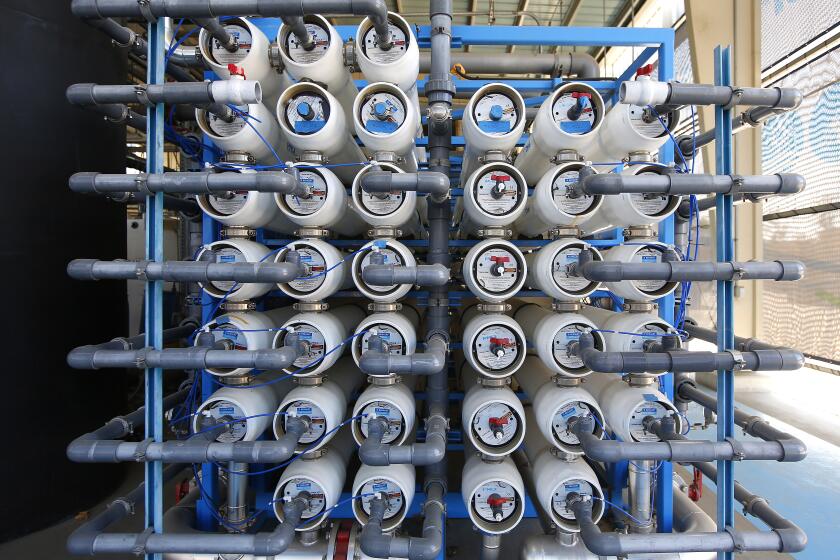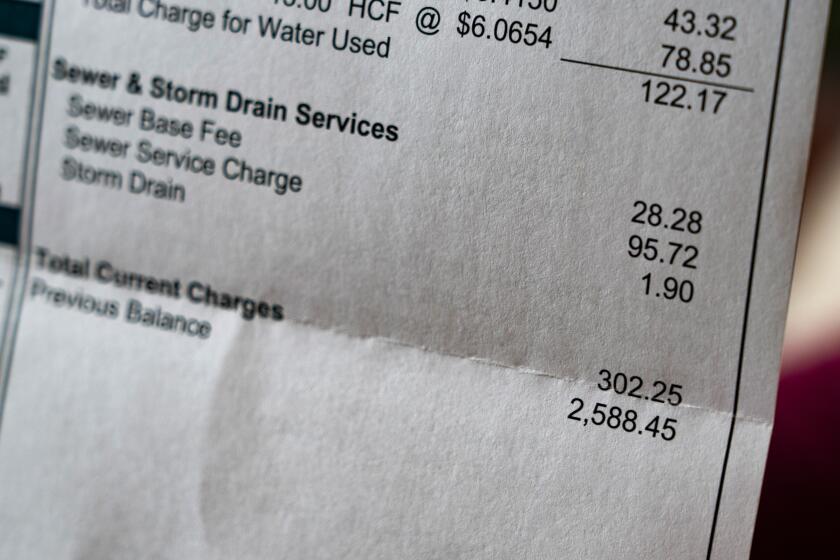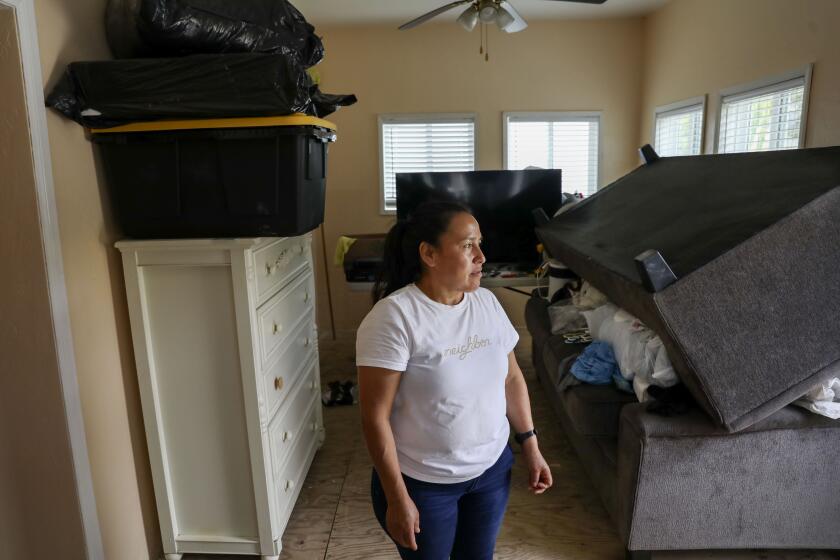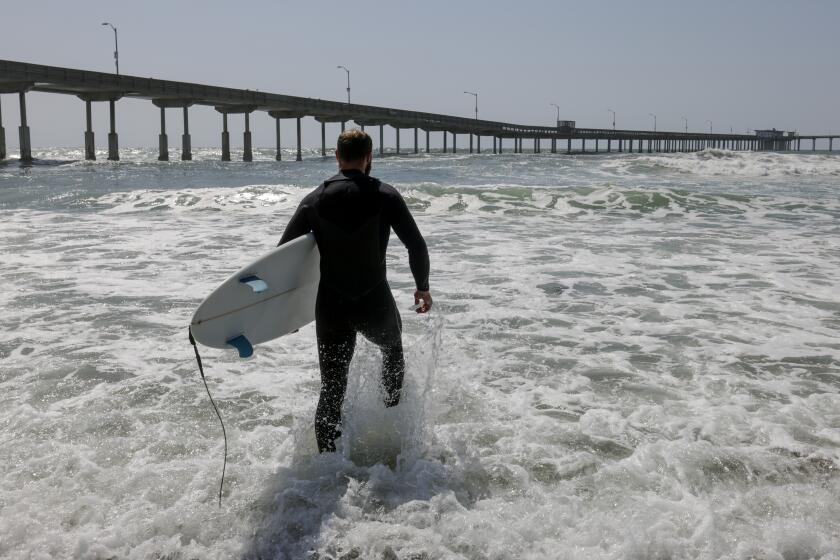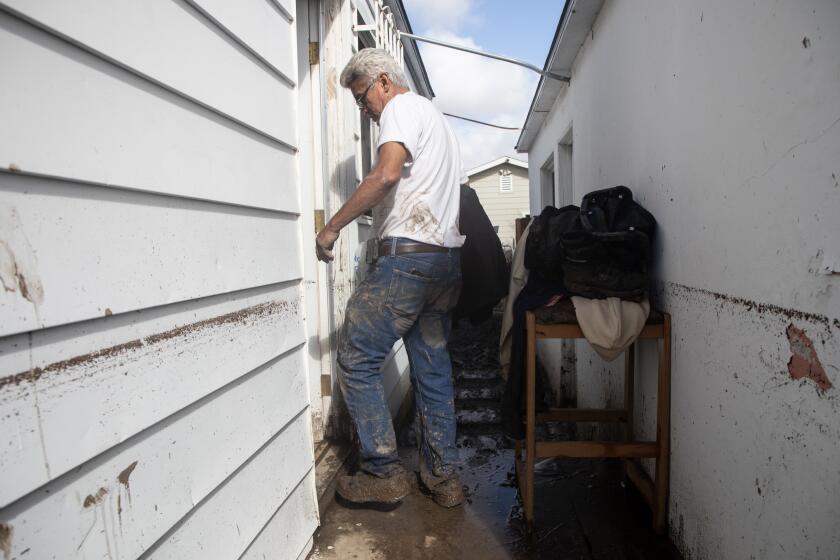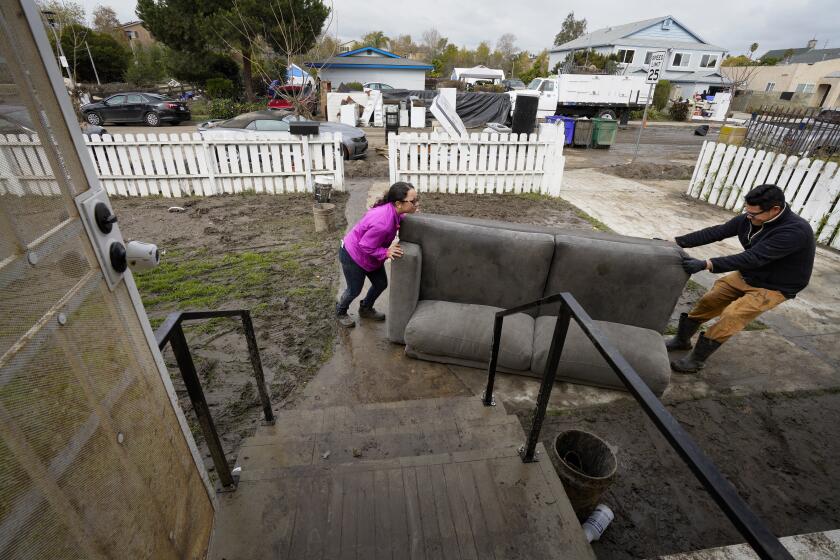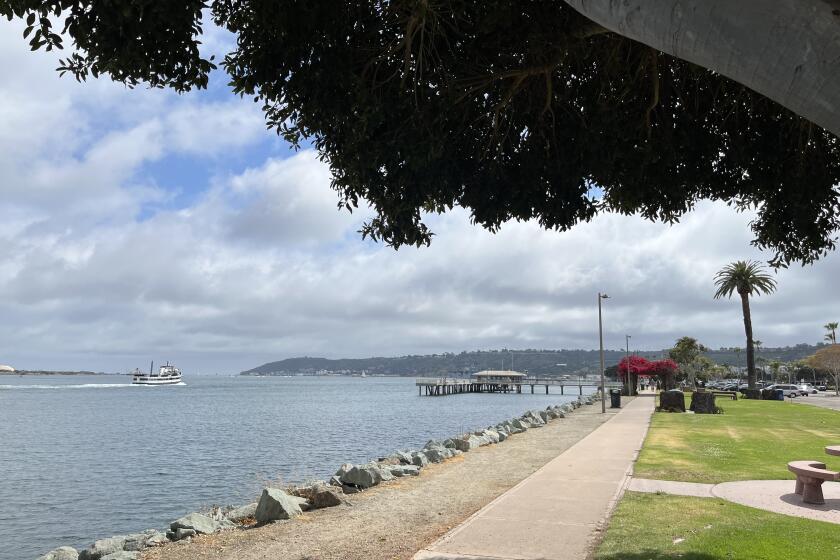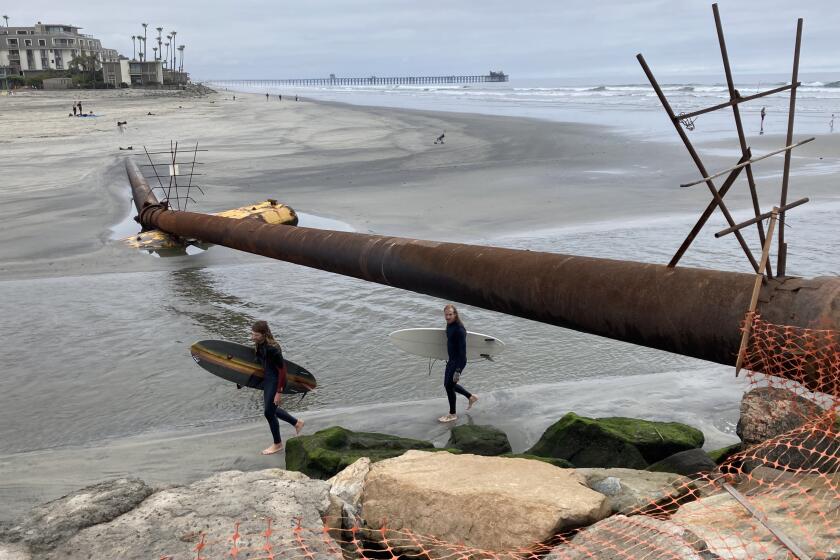In split vote, San Diego raises water rates by nearly 20 percent over 2 years. For some, that’s ‘tough to swallow.’
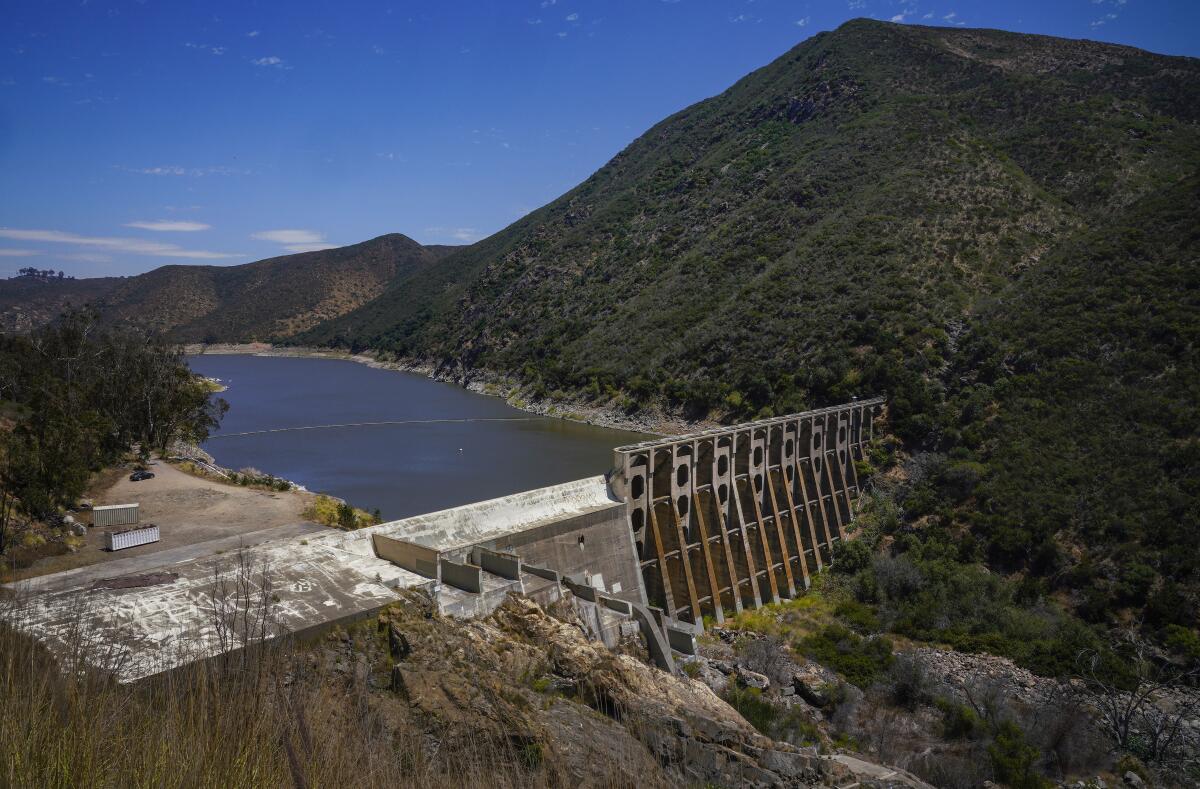
The comprehensive rate hike — the first approved by the City Council in nearly 8 years — will cost the average single-family homeowner about $12 more each month
San Diego water rates will rise nearly 20 percent over the next two years after a divided City Council approved Tuesday the first comprehensive rate hike in nearly eight years.
The rate increases, approved by a vote of 5-3, will come in three parts: A 5 percent hike on Dec. 1, a 5.2 percent increase next July 1 and an 8.75 percent jump in January 2025. An earlier version of the proposal would have raised the rates more quickly — by 10.2 percent on Dec. 1 and 8.75 percent in January 2025.
When compounded, the increases total a 19.8 percent jump. For the average single-family homeowner, that’s an increase of about $12 per month.
City officials began studying the additional revenue increases last fall to cover rising costs for imported water — which makes up between 85 and 90 percent of the city’s water supply — as well as upgrades to thousands of aging pipes and a long list of short-term and long-term capital projects.
Monthly fees for most single-family homes would rise from $81.07 to $93.55; hikes would be city’s first comprehensive increases since 2015
The capital projects include the Pure Water sewage-recycling system — which has been under construction since last year and is expected to provide about half of San Diego’s potable water once completed — along with upgrades needed to several aging city dams that state officials have deemed in poor condition.
The rate hikes will also pay for the recently approved pay raises for 950 city water workers and upgrades to the city’s customer-service system, which has been harshly criticized for billing delays that saddle customers with gargantuan cumulative bills and for long customer service call wait times.
City officials say the goal is to raise the annual revenue generated by the city’s water system from $566 million to just over $600 million.
A vast majority of the nearly three dozen people who spoke during public comment opposed the rate increase. Each was given just a minute to convey their thoughts.
The city blames severe staffing shortages for investigations into unusual meter readings taking too long, forcing the city to suspend billing for many months.
“We are not lazy people. We’re hardworking people, and we still cannot pay for all these [utilities],” said Maria Lopez, a delegate from the San Diego Workers Benefit Council, which represents thousands of low-income families.
Longtime San Diego resident Alejandra Trujillo said her bills are rising but her income is not.
“I sometimes don’t have enough to eat, to wash my clothes, to buy shoes that I need because I’m diabetic or to send money to my mother or my children,” Trujillo said in Spanish. “We’re drowning in a glass of water with these cost increases.”
Lucy Benner read a letter from Peter Hall, a registered nurse at UC San Diego Health, who said access to tap water is a lifeline. “Accessing a basic amount of water is not a discretionary purchase decision, and to commodify its use is to show a reprehensible insensitivity to humanity,” Hall wrote.
Many of those who spoke were landlords who wanted to keep rates reasonable for tenants, while tenants shared their concerns that their rent would rise if water rates did.
Others said they would rather see enforcement of water-waste laws or the creation of a subsidy program for low-income residents.
“The frustration in this room is palpable,” said Councilmember Stephen Whitburn. “The situation that we’re in and what many San Diegans are experiencing around hold times and water bills just isn’t acceptable — but not fixing our pipes is not acceptable either.”
Director Juan Guerreiro said the city’s Public Utilities Department has been working to correct customer service issues over the last five years.
These upgrades include better training for customer service representatives, a web form system to allow customers to submit inquiries online, an updated call center set to go live next week and billing system updates to ensure customers are billed on time and accurately.
The rate hike will fund a new customer service portal that Guerreiro said will free up representatives to assist with more complex inquiries or with customers who cannot use the online platform. It will also allow the department to develop a citywide smart meter deployment plan so customers can access accurate water usage data.
However, many public commenters complained they were still having problems with the customer-service system.
And over 30,000 water bills are currently on hold, utilities department officials confirmed Tuesday. Those customers may not actively be being billed, so their bills may be compounding.
A handful of council members said they understand the ongoing need to adjust outdated water rates, but that the cost of living is already too high.
“This is going to be another significant impact to their monthly budget,” Councilmember Vivian Moreno said. “It would be easier if the increase were spread out over a longer period of time and was more gradual. The impact is all happening within the 13-month period. That’s really tough to swallow.”
Moreno was joined by Councilmembers Marni von Wilpert and Monica Montgomery Steppe in voting against the increase.
The water-rate hike will raise monthly bills for a typical single-family homeowner from $81.07 to $93.55 as of January 2025. An earlier version of the proposal would have raised them to $103.06.
Single-family homeowners make up 80 percent of the 270,000 customers served by the city’s water system. Roughly half of the water used by single-family homeowners gets billed at the lowest tier rate, which is essentially for customers’ indoor water use only.
The approved rate increase will shrink the number of tiers for single-family customers from four to three, eliminating the most expensive tier. There are no tiers for other customer classes, which include businesses, agriculture and multi-family housing — apartments and condos.
The city faces ongoing litigation over its water tiers, which aim to reward customers who use less water with lower rates and penalize customers who use more with higher rates.
City water customers have faced a few small increases since the council last approved rate hikes in 2015, but those haven’t been prompted by a comprehensive analysis of the water system’s overall finances. This time, the city ordered two separate studies of costs and revenues by different consultants to determine how large water increases should be.
The first two parts of the water-rate increase totaling 10.2 percent are composed of a 6.6 percent increase for the city’s water system and a pass-through of an expected 3.6 percent increase next year in what the San Diego County Water Authority charges local agencies for imported water.
The city recently has just directly passed on to customers increases in the price of imported water imposed by the county authority, including separate 3 percent hikes in January of this year and last.
The final 8.75 percent increase consists of a 4.3 percent increase for the city’s water system and a pass-through of an expected 4.4 percent increase in 2025 to what the water authority charges for imported water.
The rate hike will leave San Diego roughly in the middle of the pack in what local agencies charge for water — far above the $60 per month charged by Lakeside and far below the nearly $180 charged by Del Mar. The county average is about $90 per month.
Customers struggling financially may be eligible for a new state program that covers up to $2,000 in annual water bill payments. Details are at csd.ca.gov/waterbill.
More information about the water rate adjustments is available at sandiego.gov/rate-adjustments.
Staff writer David Garrick contributed to this report.
Get Essential San Diego, weekday mornings
Get top headlines from the Union-Tribune in your inbox weekday mornings, including top news, local, sports, business, entertainment and opinion.
You may occasionally receive promotional content from the San Diego Union-Tribune.
